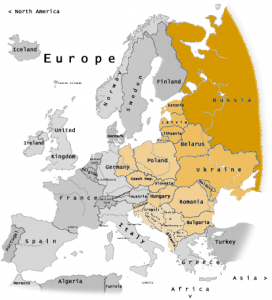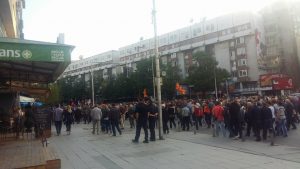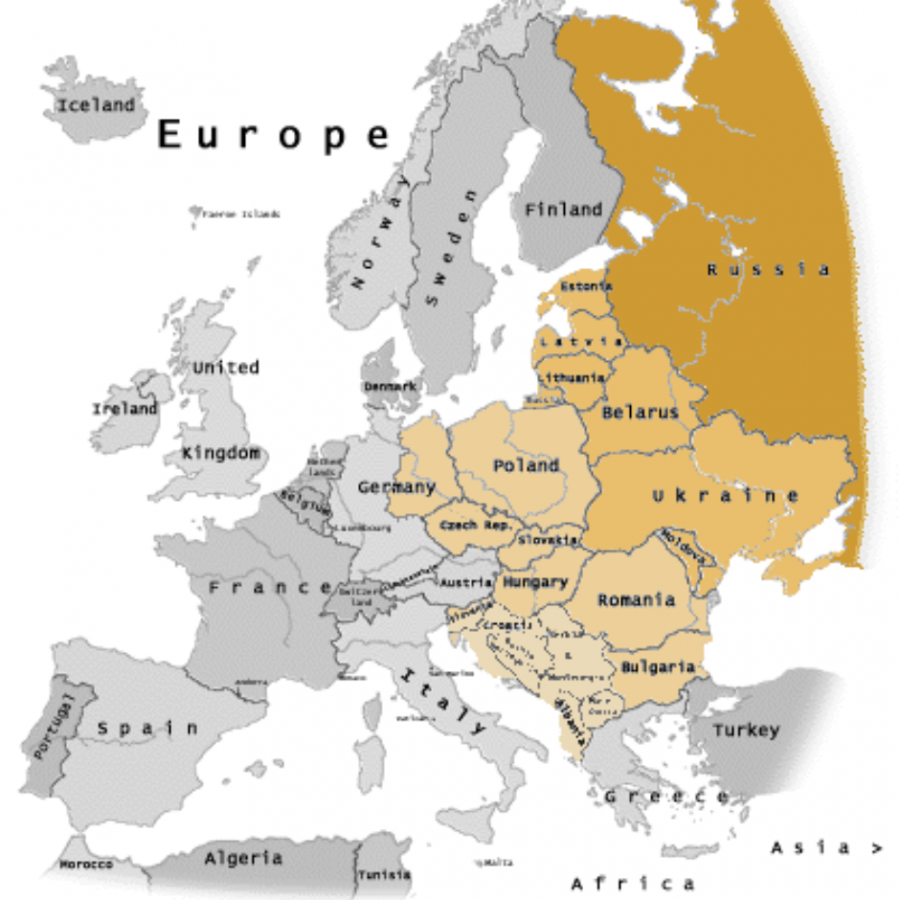
A few weeks ago, a friend of mine and I were at a café pretending to do work when he read me the following passage from Annie Ernaux’s “The Years” [*1], a memoir that aims to capture collective experiences, that I have not been able to get out of my head since:
Yugoslavia was in a state of bloody mayhem. Bullets whistled back and forth across the streets from the weapons of invisible shooters, snipers. But as the shells vied to wipe out passersby, reduce thousand-year-old bridges to dust, and the formerly ‘new’ philosophers vied to shame us, going out of their way to repeat, ‘Sarajevo is only two hours from Paris’, we kept to ourselves, overcome with fatigue. We’d exerted too much emotion during the Gulf War, for no good reason. Consciousness retracted. We were angry with the Croats, the Kosovars, etc., for killing each other like savages instead of copying us. We did not feel we belonged to the same Europe as them.” (171-2)
Given the context of Ernaux’s book, which traces different instances of French and world political history over the span of 66 years, one can clearly infer that the “we” of this passage refers to French people and, by extension, Western Europeans as a larger group. As a Macedonian, I am inclined to think that I am not and probably never will be a part of this “we”.
Ernaux’s words struck such a chord with me not because I believe that she holds these opinions herself, but because she was able to capture an aspect of the Western European imagination. As someone who has lived in Germany for almost three years now, the question about the difference between the two Europes that Ernaux describes sneaks up on me on a daily basis. I still catch myself converting euros into denars, fruitlessly searching for real Balkan cheese in Rewe, shamelessly eavesdropping on people speaking Slavic languages on public transport.
“Countries in Central and Eastern Europe – until now absent from our geographical imagination – seemed to multiply and endlessly divide into ‘ethnic groups’, a term which distinguished them from us and other serious populations. It suggested backwardness, the proof of which was the return to religions and intolerance,” (171) writes Ernaux, cleverly capturing the Western sentiment towards its Eastern counterpart. As opposed to Western Europeans who come from states with established territories and histories, I certainly do not belong to a “serious population” – Macedonia has two million people. Because of this, whenever I meet new people, I am usually the first Macedonian they’ve met. Though not always, these interactions can take up an exoticizing tone, no matter how well-intentioned the person is. They usually ask me what it’s like to live there, and I tell them about our pollution, corrupt governments, and poverty. They listen and respond with something like “Oh that’s interesting”, as if I’ve contrived an interesting story for consumption instead of describing the real lives of real people.

The instance I felt — or rather, I felt like my country was — most exoticized was not in some kind of flirtation scenario as one might expect, but rather when two American friends came to visit me in Macedonia for a few days. During my improvised sightseeing tour of Skopje, I planned to show the two of them the new kitschy government building. On our way there, we crossed paths with a Macedonian nationalist protest. This was one of the many protests that happened almost every day for about two months in 2017, all of which utilized racist anti-Albanian rhetoric as well as visible symbols like flags of Macedonian nationalism. Since I had been out of the country, I had not had a chance to witness one of these protests in person up until that point. I was beyond horrified and could not stop thinking about the danger that such political gatherings posed to my country. However, it seemed that I was alone in this. My friends took pictures of the protest like it was just another sight to be seen and then proceeded to change the topic to a political article that one of them had read. No matter how much I tried to bring the topic back to the pseudo-fascist rally we had just witnessed, it seemed that they weren’t interested in discussing it. Even though I am sure that neither of them had ill intentions, the message that their lack of words communicated was that my country’s turmoil didn’t warrant even a five minute conversation, while Trump, Le Penn and other nationalists always got appropriate attention. After all, what we had just seen were not problems that belonged to a “serious population”.
But what is the thing that prompts the West — or, at least, some of the Westerners that I’ve engaged with on the subject — to see us as merely a collection of unserious populations? What elicits tepid reactions like “oh that’s interesting” when we summarize part of our collective narratives? What makes our history and our present so different? Why are we not considered as part of the same Europe? The reasons are numerous. One could point to the 500 years of Ottoman Occupation: This history is unique to Eastern Europe and is one that Western Europe, which has itself engaged in colonisation in the last centuries, can not understand. One could also point to our past of state Communism. One could, as Ernaux does, point to violent nationalisms that culminated with atrocities such as Srebrenica. But out of all of this, what I believe to be the most relevant factor is the economic difference of Eastern Europe: We are poorer than the West.
Before I read a part of Cedric Robinson’s Black Marxism [*2], I had not found a text that explained the nature of the poverty of Eastern Europe and other “third world” countries so coherently. In the introduction to Black Marxism, Robinson explains where traditional Marxism went wrong and how, not only did Marx and Engels not take into account the economic consequences of the enslavement of black people, but race relations were not properly incorporated into the Marxist analysis. Robinson explains that (Western) capitalism has always externalized some costs of production to other countries and other racial groups – an example that came to to mind when I read this is that of the sweatshops in Bangladesh, where workers are paid a meagre wage so that the clothes at “fast fashion” stores can be sold cheaply in the West. Robinson does not identify this practice as racism, but as racialism.
Since race is not as simple as the color of a person’s skin, Robinson emphasizes the narratives that are created around certain groups, such as the black community, racialize them. Robinson argues that these racial narratives — usually of an inferiority of some kind — are constructed for the purpose of the legitimization of the oppression and economic exploitation of these racialized groups. He writes: “One such recurring idea is racialism: the legitimation and corroboration of social organization as natural by reference to the ‘racial’ components of its elements” (2). With this, Robinson argues that the violence towards racialized groups is not as simple as the literal violence on the street or police brutality. Rather, racialism is used as a tool of the larger capitalist system that exerts economic violence. He writes that “it could be expected then that racialism would inevitably permeate the social structures emergent from capitalism” (2), meaning that racialism is an integral part of what Robinson refers to as racial capitalism.
But how is this racialization done? The racialization of certain groups is not based in biological fact or material reality: There are no biological differences that make one racial group superior or inferior to another. However, one could infer from Robinson’s text that these racial narratives were constructed in such a way that it made them appear as if they are based on truth, as if this conceived racial order was natural. Robinson speaks about racialized groups as a kind of invention: “Thus the ‘Negro’ was conceived. The Negro – whose precedents could be found in the racial fabrications concealing the Slavs (the slaves), the Irish and others” (4). The conception of these groups involved creating collective narratives about how these groups were different from the Western white hegemony. When I saw the Slavs listed in the naming of these racialized groups, it suddenly clicked for me that, regardless of the fact that Slavic people are typically identified as white, they are still subject to the economic violence that Robinson describes. “Racism, I maintain, was not simply a convention for ordering the relations of European to non-European peoples but has its genesis in the ‘internal’ relations of European peoples”, writes Robinson (2). This, of course, does not necessarily mean that the majority of Westerners hold ill will towards Eastern Europeans, but it does mean that at least by entities of economic and sometimes political power, such as big companies, they are deemed to be worth less.

It is important to consider that narratives were constructed about Slavic people just as they were about black or Jewish people in order to understand the current economic conditions in Eastern Europe. During World War II, Slavs were amongst the peoples that the Nazis deemed to be naturally inferior, along with the Jews, Roma and others. As a result of these racist narratives, my great-grandfather was almost sent to a concentration camp during the war. Without the initial creation of such narratives, the racialization and exploitation of Slavic people could not be executed so easily. Although discrimination against Slavic people is present to some degree in places like the UK, the kind of explicit persecution or discrimination that my great-grandfather experienced is thankfully not an issue we need to be overly concerned about today. Instead, I would like to call attention to/focus on the stagnation of the region, which is at least partially perpetuated by the economic nature of the racialization that Robinson speaks of. Certainly, Eastern Europeans will be identified as white and will not face violence on the street like people of color do. However, the hidden nature of the economic racialization of Eastern Europeans, as well as communities of color and “third world” countries, is harmful in a less explicit and perhaps a more insidious way. It is harder to fight against as it is embedded in the global economic system we live under. As long as global capitalism functions the way that it does, certain costs of production — like the manufacturing of clothing and computer parts or the assemblage of smartphones — will need to be externalized somewhere. And the best places for doing so are where people who are not visible to the West work — in the global South, in communities of color etc.
The hierarchies that Robinson speaks of are obviously still in place. An example of the hierarchies’ activity would be in the recent gifting of an incinerator for medical waste by the UK to Macedonia. Expert of toxic waste management Adam Ostrowski told The Guardian [*3]:
This is one of the worst pieces of dirty technology dumping dressed up as aid that I have witnessed in eastern Europe. (…) This sort of technology has been outlawed in western Europe. It is just not right to generously give it to the Macedonians knowing it will have toxic emissions and have to be scrapped when they join the EU. They should be ashamed.What is more, an Italian company manages the Skopje incinerator since 2013 and is suspected of burning radioactive waste [*5]. Even though I cannot give a scientific analysis of the
situation, I can attest that the pollution in Skopje has gotten exponentially worse in the past few years, reaching on some days levels two or three times the most dangerous limit set by the EU. This demonstrates the governments of the West do not think that the same rules regarding pollution apply to the East. Air pollution at the levels that Skopje sees on an almost daily basis in the winter can cause a variety of health problems for everyone living in the city. These effects would not be acceptable in the UK but are somehow ignored by the West when the group affected is not Western.
And then there is the obvious wage inequality: Bulgaria’s average monthly wage is 457 euros, while Germany’s is 2,270 euros; Ukraine’s is 212, while Denmark’s is 3,270 euros [*5]. Although cheap Eastern European labor is exploited almost universally, I would like to point to an article from Balkan Insight [*6] which reported on the horrific conditions that textile workers face in Romania and Bulgaria. In the article, one can read about how companies such as Marc O’Polo and Zara take advantage of these (often female) workers, how they are scared of speaking to the media for fear of losing their jobs, and how one woman under the pseudonym Cristina was paid a mere 340 euros for half a year’s work [*7]. The article emphasizes:
Activists and media outlets have railed against the plight of garment workers in recent years, often focusing on Asia. But even inside the European Union, in Romania and Bulgaria, workers in factories endure low wages, long hours and arduous conditions to make clothes for major fashion companies, including luxury brands.
It seems that it is still the case that the same rules do not apply to Eastern European countries as they do to Western Europeans ones. And, by extension, it seems that the same dignity is not afforded to their people. Under global capitalism, certain costs need to be externalized to different parts of the population, and it is necessary that this part of the population is not a part of the white Western hegemony for this externalization to be possible. It is hardly surprising that these clothing companies have chosen countries like Romania and Bulgaria because, just as in the case of the dumping of the waste incinerator in Macedonia, the populations of these countries are still racialized and are still placed lower on the scale of “‘internal’ relations of European peoples” (Robinson, 2).
Finally, Eastern European labor is also exploited in the West. Plenty of statistics can be found about how much less Eastern European migrants, who usually do “unskilled” labor in Western Europe, are paid. The Daily Mail published an article titled “Three in four migrants from Eastern Europe filling low-skill jobs”, which describes how “evidence mounts [that] cheap labour is forcing down British workers’ pay. [*8]” There is a clear implication in the title’s phrasing that the migrant workers themselves are responsible for how much they are being paid. The article puts the blame on Eastern European workers instead of their employers who have the power to choose to pay them less because they know that these workers are coming from more desperate circumstances and would thus accept lower pay. This case again proves Robinson’s thesis of racialization: It is only because the Eastern European migrants are racialized as lesser than Western European people that paying them lower wages in the West could possibly be deemed acceptable.
It seems that Eastern Europeans, whether they be immigrants in Western European countries or inhabitants and workers in their own, are still not European (and maybe “white”) enough. As Ernaux suggests, Eastern Europe has not entirely stopped being “absent from [the Western] geographical imagination” (171). The first step to changing that is by acknowledging that that absence exists. As an Eastern European living in Western Europe, this article is my way of getting to that first step. Maybe one day both sides of what was once the Iron Curtain will equalize, but for now it seems that we still do not belong to the same Europe as them.
Notes:
- Ernaux, Annie. The Years. Trans. Allison L. Strayer. New York: Seven Stories Press. 2017. Print.
- Robinson, Cedric. Black Marxism. Chapel Hill & London. The University of North Carolina Press. 1983. Print.
- Brown, Paul. UK makes toxic gift to the Balkans. The Guardian. May 21, 2001. https://www.theguardian.com/environment/2001/may/21/globalwarming.europeanunion
- Shilegov: It is suspected that there was radioactive waste burned in the waste incinerator “Drisla”. (Шилегов: Постои сомнеж дека на „Дрисла“ се горел радиоактивен отпад). Fokus. November 11, 2017. http://fokus.mk/shilegov-postoi-somnezh-deka-na-drisla-se-gorel-radioaktiven-otpad/
- https://en.wikipedia.org/wiki/List_of_European_countries_by_average_wage
- Stefanut, Laura. Fashion Victims: Even in EU, Garment Workers Face Tough Conditions. Balkan Insight. February 9, 2016. http://www.balkaninsight.com/en/article/fashion-victims-even-in-eu-garment-workers-face-tough-conditions-01-12-2016
- Ibid.
- Slack, James. Three in four migrants from Eastern Europe filling low-skill jobs: Third are in roles such as fruit picking as evidence mounts cheap labour is forcing down British workers’ pay. Daily Mail. May 19, 2015. http://www.dailymail.co.uk/news/article-3088541/Three-four-migrants-Eastern-Europe-filling-low-skill-jobs-roles-fruit-picking-evidence-mounts-cheap-labour-forcing-British-workers-pay.html

